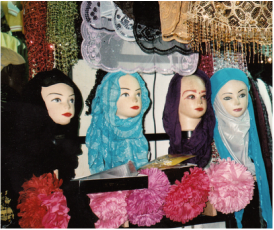
“Didn’t it make you furious?”
They’re asking about when we traveled in the Middle East. Sometimes, it’s about when she had to cover up in Iran, other times about sexist men she encountered in places like Morocco and Egypt. Often, they’re outraged by apparently limited opportunities for women in certain countries. Everyone has an opinion.
Sure, we were indignant, even outraged, sometimes, but we came to understand these traditions, even if we didn’t agree with them. We also discovered that situations often aren’t what they seem at first. These rules aren’t just about controlling women.
We learned that people often cling to habits and customs from generations or centuries before. In the U.S., we lived in wide open spaces with wild animals and often hostile neighbors, so we still like to sprawl, think nothing of driving for hours, and love our guns – whether these habits make sense now, or not. In the Middle East, people roamed with their animals and clans and often were isolated and vulnerable to attack by marauders or other tribes, so they hid their prized possessions, including women who might be abducted. Despite the centuries since these customs originated, many men there still tend to think of women as possessions to be both cherished and protected.
By contrast, here in the United States, judging from recent events and news, women are neither cherished nor protected. Maybe they don't want to be, but it is considered among some American men, especially it seems in the military and high schools and colleges, to be okay to harass and even physically attack any females who happen to be around—and then to blame them for being enticing.
In the Middle East of the past, traditions and customs provided rules to live by in a dangerous world. At the same time, rules of hospitality emerged because being provided with shelter and nourishment after a long journey could be a matter of life and death. These traditions still linger in the Middle East.
Maneuvering through a village souk in Lebanon, we found tiny shops selling veils, scarves, and coverings for women – while passing young women in tee shirts and jeans, older women in loose black clothing, and everything in between. In a hotel in Beirut, we watched a photographer take wedding pictures of a bride wearing a stylish wedding dress with bare shoulders, her husband-to-be holding her naked arm. Women in Lebanon run businesses, earn college degrees, and are professionals with careers – and do all this dressed either conservatively or in western clothes, as they choose.
In Iran, more than 50 percent of the university graduates are women, at least half of the doctors are women, and women hold professional jobs in many fields. They do this while dressed in hijab: a long coat known a manteau and loose pants with a headscarf or even the traditional chador from head to ankle. In the U.S., women still struggle to rise in many fields and to get equal pay.
For decades, in Syria, Egypt, Turkey, and other Middle Eastern countries, women could choose between traditional or western dress and were free to pursue the careers they wanted. Recently, reacting to growing poverty, political unrest, and increasingly extreme western attitudes, a tug-of-war between traditional and western ways has emerged in these countries. It seems impossible to predict what the outcome will be, although many young people in the Middle East want the freedoms of the west. However, there doesn’t seem to be the epidemic of harassment and rape that we see in the U.S. Until we solve our own problems, should we point fingers at other countries?
 RSS Feed
RSS Feed